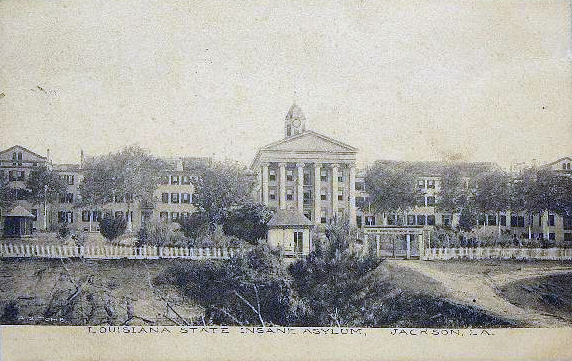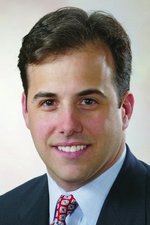Home
Louisiana
Number
of Victims
The
eugenics project in
Louisiana did not result in known sterilizations of mentally ill,
those who were considered "feeble-minded," or other groups.
Passage
of Laws
The
one law passed in
Louisiana pertaining to the eugenics movement covered anyone who,
though not
mentally ill, suffered from an inborn mental defect “so pronounced that
he is
incapable of managing himself and his affairs, or being taught to do
so, and
requires supervision, control and care for his own welfare or the
welfare of
others, or for the welfare of the community” (Larson, p. 83).
Groups
identified in the law
Louisiana’s
eugenics
movement targeted mainly poor whites (Larson, p. 157), who were insane,
criminal, consumptive, scorbutic, syphilitic, aye, or a pauper (Larson,
p. 54). These
people were never sterilized but
segregated by institutions.
Process
of the law
The
state legislature
approved the construction of a state colony for the mentally retarded
and the
medical community became interested in the forced sterilization of
eugenically
unfit patients within that colony and other state institutions (Larson,
p.
53). The mentally
retarded, as well as
the other groups identified in the law were placed in state
institutions but no
sterilizations were ever actually performed.
Precipitating
factors and processes
The
reason most likely
causing the absence of any sterilizations
in Louisiana
was their focus on creating state institutions for the targeted groups
for
segregation. The
watchword of the day
was prevention (Larson, p. 54). If
these
people were placed under a watchful eye in state institutions, then the
creation of more hereditary unfit people was impossible.
Racial segregation was also very important to supremacist Louisiana
residents. The “fear of interracial sex entered the annals of
law, politics, and protest” (Cahn, p. 276). Jean Gordon, a Louisiana activist stated that without sterilization “our
Nordic civilization is gone” (Cahn, p. 164). Proponents of
sterilization believed that poor whites were corrupting the white race
by having mixed-race and feeble-minded children.
Groups
targeted and victimized
The
groups targeted
during the Louisiana eugenics project include poor whites (Larson, p.
157),
rapists (Larson, p. 52), and the insane, criminal, consumptive,
scorbutic,
syphilitic, aye, and paupers (Larson, p. 54).
Other
restrictions placed on those identified in the law or with disabilities
in
general
The
president of the
Louisiana State Medical Society, Joseph A. O’Hara, advocated for the
supervision of marriage to prevent procreation of the hereditarily
unfit
(Larson, p. 53).
Major
proponents
The
most prominent
proponent of the eugenics movement in Louisiana was Jean M. Gordon, the
youngest daughter of a socially prominent New Orleans family. She lived with her two
older sisters,
Frances and Kate, both of whom pursued active careers as progressive
reformers,
but Jean Gordon took charge of the Louisiana eugenics movement by pursuing
social
reform and a crusade against child labor.
After becoming the first female factory inspector in New
Orleans, she
became obsessed with the poor mental and moral condition of children
working in
these factories (Larson, p. 77). Gordon
eventually established the Milne Home for Destitute Orphan Girls that
was
intended to provide for the segregation and sterilization of mentally disabled
women (Larson, pp. 77-78).
The Louisiana Southern Gentlemen was a white supremacist organization
in Louisiana that was also a proponent of many eugenic ideals (Cahn, p.
278).
“Feeder
institutions” and institutions where
sterilizations were performed
There
were many institutions for undesirables in Louisiana but none
where sterilizations were performed.
Most of these institutions were opened between 1919 and
1923 (Noll, p.
23). The financial
costs of building,
maintaining, and adequately staffing these institutions became
prohibitive
especially during the depression (Noll, p. 48-49), and often these
institutions
could rarely provide more than basic care (Noll, p. 124). These institutions
included the South
Louisiana Hospital for the Insane (Larson, p. 44), the Milne Home for
Destitute
Orphan Girls, the East Louisiana Hospital for the Insane (Larson, pp.
77-78),
and Louisiana’s State Colony and Training School in Alexandria (Larson,
p. 92). G.M.G.
Stafford, the superintendent of
Louisiana’s Sate Colony and Training School, expressed his concern by
voicing
the fact that Louisiana could provide little more that a bed and the
necessary
food to all of its patients (Noll, p. 49).
This institution housed the delinquents and
non-delinquents together
(Noll, p. 120) as well as the white and black "feebleminded" persons in segregated
quarters.
History of Institutions
South Louisiana Hospital for the Insane, Milne Home for Destitute
Orphan Girls, East Louisiana Hospital for the Insane, Louisiana’s State
Colony and Training School in Alexandria, Central Louisiana State
Hospital are the relevant institutions.
The East Louisiana Hospital for the Insane is considered to be
one of the largest and most important Greek Revival architecture
buildings in Louisiana. Still in operation today the institution
has gone by the names East Louisiana State Hospital for the Insane,
Jackson State Hospital, and the Eastern Louisiana Mental Health System.
Located in Jackson, Louisiana the East Louisiana State Hospital opened
in 1848 and the following image appeared on a postcard of the asylum in
1907. This instiution was among the first in the South of its type.
The Central Louisiana State Hospital was established in 1902 and opened
in 1906. The facility has been known by many names since it began to
house and treat the mentall ill on January 6, 1906 but is currently
known at the Central Louisiana State Hospital. The first superintendent
was Dr. George A.B. Hays. The building and grounds style of the
institution is a cottage plan which is unique (Asylum Projects).
The Milne Home for Destitute
Orphan Girls is located in New Orleans, Louisiana and is now a
privitized health care facility. The Milne Home for Destitute Orphan
Girls was established in 1925 and is now also referred to as the Milne
Home for girls ("Milne Asylm For Destitute Orphan Girls."). Jean Gordon
was the president of the Milne Asylum for Destitute Orphan Girls.
Picture of East Louisiana Hospital for the Insane
 (Photo
origin: Asylym Projects, 1907 Postcard, available at
http://www.asylumprojects.org/index.php?title=File:Jackson_Louisiana_SH_PC.jpg)
(Photo
origin: Asylym Projects, 1907 Postcard, available at
http://www.asylumprojects.org/index.php?title=File:Jackson_Louisiana_SH_PC.jpg)
Opposition
Like
all other eugenics
programs going on in the world in the early to mid-twentieth century,
Louisiana’s
program was opposed by the Catholic Church all the way up to the Pope
who
denounced eugenics in front of the whole world. Catholic voters had
large numbers of citizens and solid economic backing in Louisiana and
so were able to defeat eugenic sterilization legislation (Cahn, p.
171).
Also, the emphasis on family in the Deep South fought
against allowing
outside agencies control over family matters such as fertility (Larson,
pp.
7-9). Furthermore,
the disabled and others who
needed it were
traditionally cared for by their families (Larson,
pp. 8-9) (see also Alabama for other factors mitigating against the
adoption of eugenic sterilization laws).
Recent Controversy
In 2008 a Louisiana lawmaker, John LaBruzzo, proposed a plan to
sterilize the poor women of Louisiana to hypothetically improve the
welfare system. In a plan lower welfare costs on society LaBruzzo
proposed that poor women be paid one thousand dollars to be sterilized.
Worried that individuals in Louisiana receiving government aid
reproduce at a faster rate than "more affluent, better-educated people
who presumably pay more tax revenue to the government,"John LaBruzzo's
proposition would essentially bribe poor women to undergo surgical
sterilization (Waller). Many people, including New Orleans' Catholic
archbishop Alfred Hughes opposed LaBruzzo's proposal due to it's
eugenic ideas (Gibson). While still a representative of Louisiana in
the House of Representatives, LaBruzzo's eugenic ideas for the welfare
system have made no progress towards becoming a law as of 2011.
 (Photo
origin: New Orleans Metro Real Time News: Elections Page, available at
http://www.nola.com/news/index.ssf/2008/09/labruzzo_sterilization_plan_fi.html)
(Photo
origin: New Orleans Metro Real Time News: Elections Page, available at
http://www.nola.com/news/index.ssf/2008/09/labruzzo_sterilization_plan_fi.html)
Bibliography
Asylum Projects. N.p., 28 Jan. 2011. Web. 24 Apr. 2011. <http://www.asylumprojects.org/index.php?title=File:Jackson_Louisiana_SH_PC.jpg>.
Cahn, Susan K. 2007. Sexual Reckonings: Southern Girls in a Troubling Age. Cambridge, Massachusetts: Harvard University Press.
Gibson, David. 2008. "Eugenics lives! Louisiana lawmaker wants to sterilize the poor." Pontifications. beliefnet. 28 Sept. <http://blog.beliefnet.com/pontifications/2008/09/eugenics-lives-louisiana-lawma.html>.
Larson, Edward. 1995. Sex, Race, and Science:
Eugenics in the Deep
South. Baltimore: Johns Hopkins University Press.
Louisiana House of Representatives. N.p., n.d. Web. 24 Apr. 2011. <http://house.louisiana.gov/h_reps/members.asp?id=81>.
"Milne Asylm For Destitute Orphan Girls." We Do Small Business. Manta. Manta Media <http://www.manta.com/c/mtgg2w7/milne-asylm-for-destitute-orphan-girls>.
Noll, Steven. 1995. Feeble-Minded
in Our Midst: Institutions for the Mentally Retarded in the South,
1900-1940. Chapel
Hill: The University of North
Carolina Press.
Waller, Mark. 2008. "New Orleans Metro Real Time News." Elections Page. nola.com. N.p., 23 Sept. <http://www.nola.com/news/index.ssf/2008/09/labruzzo_sterilization_plan_fi.html>.

 (Photo
origin: Asylym Projects, 1907 Postcard, available at
http://www.asylumprojects.org/index.php?title=File:Jackson_Louisiana_SH_PC.jpg)
(Photo
origin: Asylym Projects, 1907 Postcard, available at
http://www.asylumprojects.org/index.php?title=File:Jackson_Louisiana_SH_PC.jpg)